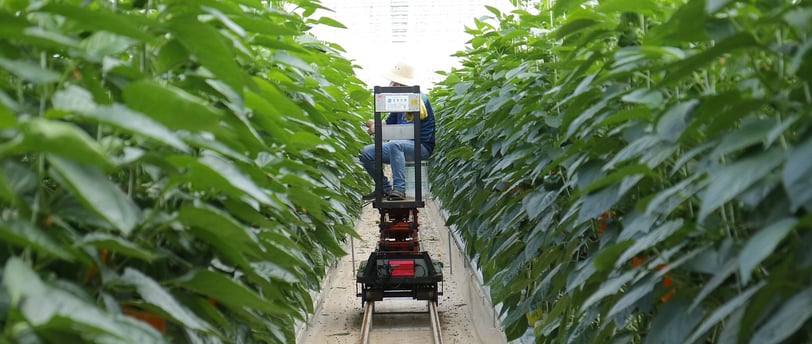AgroHope and Climate Change: Adapting Agricultural Practices for a Changing World
Learn how AgroHope is helping farmers adapt to climate change by implementing climate-resilient agricultural practices, innovative technologies, and sustainable farming solutions.


Global warming stands as one of the most urgent challenges we face today, impacting every facet of our existence, from our food production to our daily routines. As the climate becomes more erratic and severe, conventional agricultural techniques are being put to the test. Enter AgroHope, a frontrunner in eco-friendly farming. Through the encouragement of robust farming and the integration of agroforestry methods, AgroHope is aiding farmers in adjusting to a shifting climate. In this piece, we will delve into the ways these strategies can pave the way for a more sustainable and robust agricultural future.
The Importance of Resilient Agriculture
Sturdy farming techniques are those that can endure and adjust to the effects of climate change. These approaches are essential for maintaining food availability and safeguarding ways of life against severe weather conditions, insects, and illnesses. Through the implementation of sturdy farming techniques, agriculturalists can lessen their susceptibility to climate change and enhance their capacity to bounce back from disturbances.
Key Elements of Resilient Agriculture
Diverse Crop Rotations: Growing a variety of crops can reduce the risk of total crop failure due to pests, diseases, or extreme weather. It also improves soil health and fertility.
Agroforestry: Integrating trees and shrubs into farming systems can provide multiple benefits, including improved soil health, enhanced biodiversity, and increased resilience to climate change.
Sustainable Water Management: Efficient use of water resources, such as rainwater harvesting and drip irrigation, can help farmers cope with water scarcity and reduce the risk of drought.
Agroforestry Practices: A Key to Sustainability
Agroforestry involves the combination of agriculture and forestry in land management. It encompasses growing trees and shrubs alongside crops and livestock, creating a diverse and productive environment. The techniques of agroforestry offer numerous benefits for farmers and the environment.
Benefits of Agroforestry
Soil Health: Trees and shrubs improve soil structure, reduce erosion, and increase organic matter, leading to healthier soils and better crop yields.
Biodiversity: Agroforestry systems support a wide range of plant and animal species, promoting biodiversity and ecosystem health.
Climate Resilience: Trees and shrubs can buffer against extreme weather events, such as heavy rains and droughts, by stabilizing the soil and regulating water cycles.
Carbon Sequestration: Agroforestry systems can capture and store carbon dioxide, helping to mitigate climate change.
Examples of Agroforestry Practices
Alley Cropping: Growing crops between rows of trees or shrubs. This practice can improve soil fertility, reduce erosion, and provide additional income from tree products.
Silvopasture: Integrating trees, pasture, and livestock in a single system. Trees provide shade and shelter for livestock, while also improving soil health and biodiversity.
Windbreaks: Planting rows of trees or shrubs to protect crops and livestock from wind damage. Windbreaks can also reduce soil erosion and improve microclimates.
Sustainable Farming Practices for a Changing Climate
Sustainable farming practices aim to minimize the environmental impact of agriculture while maintaining productivity and profitability. These practices are essential for building resilient agricultural systems that can adapt to climate change.
Key Sustainable Farming Practices
Conservation Tillage: Reducing or eliminating tillage to maintain soil structure and reduce erosion. Conservation tillage can also increase water infiltration and soil organic matter.
Cover Cropping: Planting cover crops, such as legumes or grasses, during the off-season to protect the soil, improve fertility, and suppress weeds.
Integrated Pest Management (IPM): Using a combination of biological, cultural, and chemical methods to manage pests in an environmentally friendly way.
Organic Farming: Avoiding synthetic pesticides and fertilizers, and using natural methods to maintain soil health and control pests.
AgroHope's Climate Solutions
AgroHope is dedicated to promoting sustainable agriculture and helping farmers adapt to climate change. Through research, education, and support, AgroHope provides farmers with the tools and knowledge they need to implement resilient and sustainable practices.
Research and Innovation
AgroHope conducts cutting-edge research on resilient agriculture and agroforestry practices. By developing and testing new techniques, AgroHope ensures that farmers have access to the most effective and sustainable methods for adapting to climate change.
Farmer Education and Training
AgroHope offers educational programs and training sessions to help farmers understand and implement resilient and sustainable practices. These programs cover topics such as agroforestry, sustainable water management, and integrated pest management.
Community Support
AgroHope works closely with farming communities to provide support and resources. This includes access to seeds, tools, and funding for sustainable projects. By fostering strong community networks, AgroHope helps farmers share knowledge and collaborate on climate adaptation strategies.
The Future of Agriculture in a Changing Climate
As the effects of climate change persist on farming, it's crucial to embrace methods that enhance durability and sustainability. By combining agroforestry with various eco-friendly farming techniques, we can develop farming systems that are more prepared to deal with the obstacles presented by a shifting environment. AgroHope's dedication to studying, teaching, and backing communities is aiding farmers in adjusting and flourishing despite the impacts of climate change.
Take Action
If you're a farmer or engaged in farming activities, think about implementing practices that are both resilient and sustainable to safeguard your way of life and the natural surroundings. Seek assistance from groups such as AgroHope for help and materials. By joining forces, we have the power to create a future for farming that is both sustainable and strong.
By adopting practices of resilient farming and agroforestry, we can guarantee food availability, preserve natural assets, and fight against climate change. The urgency to take action is pressing – for the benefit of our planet and the generations to come.
